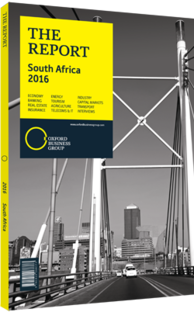Mark Lamberti, CEO, Imperial Holdings: Interview

Interview: Mark Lamberti
Which infrastructure corridors offer most potential for boosting regional cross-border activity?
MARK LAMBERTI: For the region to grow and thrive there needs to be very efficient transport infrastructure in place. Along with free trade areas, a strong Customs regime and good border management, the tools will then be in place to boost cross-border activity. The tripartite free trade agreement between the Southern African Development Community (SADC), the Common Market for Eastern and Southern Africa, and the East African Community is a step in the right direction to open up trade among these major regional blocs.
In terms of corridors, the goal should be to shift from road to rail not just in South Africa, where the former is the top medium for freight transport, but in the SADC region as a whole, especially for bulk cargo industries such as mining and agriculture. Otherwise we are mainly looking at roads to service industries such as health and fast-moving consumer goods (FMCG). Opening up the corridors and trade, streamlining a Customs structure and perhaps even a single currency exchange in the SADC could facilitate cross-border flows. Outside of South Africa the regional transport infrastructure is currently quite poor, and if you add up delays at border posts, and fuel and labour costs, margins are squeezed.
Not enough is being done to improve border management, and that will require regional cooperation and harmonisation of Customs. Flows will start going through other corridors if delays at border posts persist. We should reduce reliance on manual intervention and shift towards electronic processes. A country cannot improve by developing infrastructure while failing to address border management and other supply chain issues. Poor supply chain efficiency can become a barrier to trade integration. Logistics performance is ultimately strongly associated with the reliability of supply chains, as well as the predictability of service delivery for both producers and exporters.
What further steps could be taken to enhance integration of these transport modes?
LAMBERTI: Road is still the main mode of freight transport but we are open to any form of bimodal transport, and we look forward to the development of Transnet’s capital expenditure plan to improve rail and port infrastructure. Clearly some products need to be shifted to rail from road to improve cost efficiencies. Fuel needs to be transported via pipelines, while other bulk commodities and containers need to go by rail. Products that are handled multiple times across the chain, such as consumer and refrigerated goods, may take a while to be shifted onto rail.
Intermodal solutions will be key, as you cannot handle consumer products by rail, for example, if you don’t have very good first- and last-leg infrastructure. Durban port has been quite expensive and could improve its efficiencies and cost recovery, which is difficult when it is not subsidised. It needs more investment in capacity to reduce congestion.
To what extent are FMCG and health care driving demand for logistics on the continent?
LAMBERTI: As the population grows and the middle class rises in Africa, the FMCG and health care sectors will continue to grow, requiring strong logistics. As FMCG and pharmaceutical players set up more manufacturing plants they will require distribution channels, and we are seeing growth and demand for logistics in these spaces. We have seen greater growth in the rest of the continent than in South Africa, where demand is soft and volumes are not growing. However, growth is affected by consumer demand. E-commerce is an industry trend that has shifted from business-to-business to business-to-consumer on the continent, as we continue to see the convergence of financial services, telecoms and retail. This will help overcome any challenges in linking demand to supply and integrated supply chain management.
You have reached the limit of premium articles you can view for free.
Choose from the options below to purchase print or digital editions of our Reports. You can also purchase a website subscription giving you unlimited access to all of our Reports online for 12 months.
If you have already purchased this Report or have a website subscription, please login to continue.

